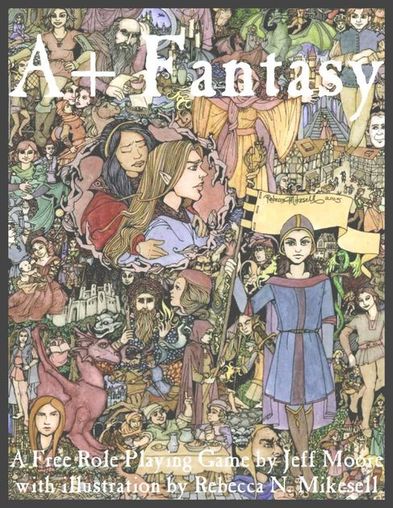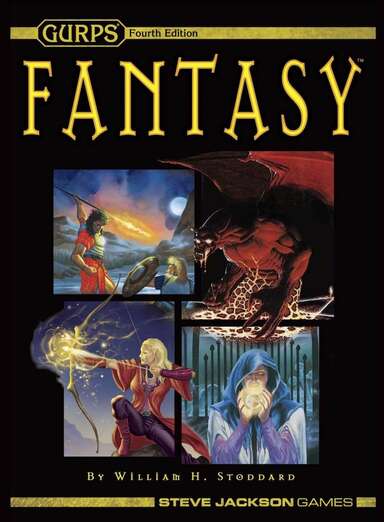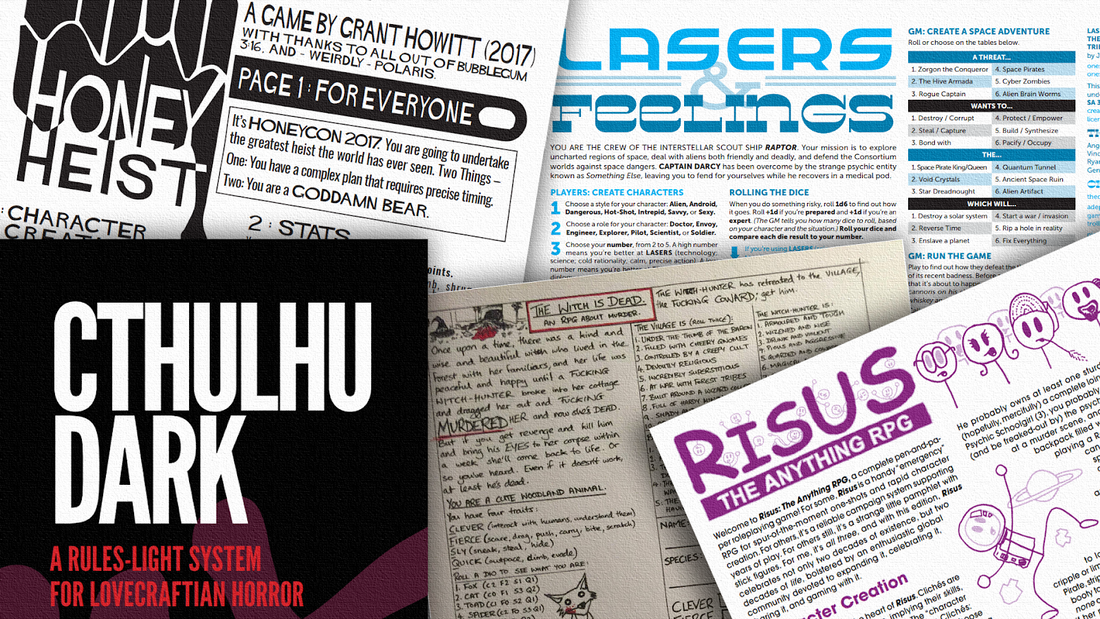|
In any creative medium that lasts long enough, there’s bound to be stretches where it seems like everybody is just copying what everybody else is doing. (In art history, they refer to these periods as movements.) Tabletop roleplaying games are no exception. An acquaintance of mine once lamented that so many games were using Powered By The Apocalypse, but not really doing anything to really make their game unique, and made the leap in logic that they were just doing so because everybody else was making a game that used PbtA. I remain largely unimpressed if a game bears a logo signifying that it uses a certain ruleset. However, I have also witnessed a few instances of people reacting strongly to such labels, both favorably and not. I try to remain dispassionate whenever I notice a trending game engine or game style in our hobby. I’ve seen it happen numerous times before. More often than not, it’s just that: a passing trend that in time, will be mostly forgotten. In light of that sentiment, for your reading pleasure, I present you with “5 Creative Movements In The RPG Fandom” so as to celebrate the unique inventions of our hobby. 1) The Fantasy Heartbreakers A term coined by Ron Edwards of the web forum The Forge, Fantasy Heartbreakers is a type of game that Edwards identifies being prominent in the 1990s. They were independently published games of the fantasy genre that seemed to be products of people trying to bring their own take on what Dungeons and Dragons could be. He describes many of them as having great ideas, but being trapped behind the shortcomings of D&D, for one of three reasons. They don’t play to what truly makes them unique, they make some minor adjustments to some of the apparent problems D&D had at the time, or they just flat out keep some of the absurd themes that D&D was stuck with. The reason these are titled Fantasy Heartbreakers is twofold: they were obviously fantasy games, but more importantly, this was a considerably more difficult time to self-publish. The internet was budding, and some of these games did take advantage of having websites, but DriveThruRPG didn’t quite take off till some years after 2000. This meant the cost of self-publishing was considerably higher, to the effect of thousands of dollars just to print. (The cost of commissioning artwork, if you could even afford it, would compound the issue.) And so, a fantasy game designer’s dream of being the next Gary Gygax would often end in a broken heart -- so much effort, so much investment, all to be forgotten in a market too small for them. 2) There’s A GURPS Book For That Generic Universal Roleplaying System is the flagship RPG of Steve Jackson Games, the company that may be better known for the Munchkin franchise. While now typically scoffed at as having way too much math to be enjoyable, there was a time when GURPS addressed issues of contemporary games. Issues such as character creation being too rampant, or playing in a different setting requiring learning a completely new game. In the 90s, GURPS was all the rage, and much like how Steve Jackson now licenses out Munchkin whenever he needs to pay the rent, he did the same with GURPS during its heyday. While both Steve Jackson’s own web-store and Drive Thru RPG boast staggering collections, this isn’t the complete library. There were numerous books published that bore the GURPS logo, including the now out of print Vampire: the Masquerade GURPS sourcebook, and even a few Japan-only exclusives such as GURPS Runal. The heyday of GURPS may be over, and large swaths of its library may now be difficult to find, but it’s hard to deny that it’s an important artifact of tabletop gaming history. (Especially since the Secret Service once seized all of Steve Jackson Game’s equipment over one of their GURPS sourcebooks!) 3) D20 System After the Fantasy Heartbreakers bled out, but before the weight of GURPS’s massive library collapsed on itself, Wizards of the Coast acquired the remains of TSR, and brought us Dungeons and Dragons 3rd Edition, and with it, the Open Gaming License and the moniker d20 System. With the freedom to use the rules to D&D to make one’s own supplements and games came a deluge fan made splat books, along with officially licensed games. Some of these were good, or at least well received, such as Mutants and Masterminds, or Blue Rose by Green Ronin publishing. I’ve read through Blue Rose; frankly, this was much like one of the Fantasy Heartbreakers opined upon by Ron Edwards close to two decades ago. It added a few new mechanics and a different setting, but at the end of the day, it was Dungeons and Dragons 3rd edition with a different coat of paint. Most games either fell into the above category, or showcased some of the flaws of Dungeons and Dragons’ core mechanics. Big Eyes Small Mouth d20 is one such example of the latter. It tried to include the freedom of a point buy game with the structure of a level based one, and failed pretty miserably at both with a kitchen sink setting. The surge of the d20 system died down some the flop of Dungeons and Dragons 4th edition, and the revival of D&D in the public eye with 5th edition. Though somewhere between the 4th and 5th edition being released, a new movement gave way. 4) Powered By Fate (Or The Apocalypse) Sometime before Dungeon and Dragons 5th edition being released, FATE and Powered by the Apocalypse picked up in popularity. I remember some of the ways friends of mine initially described FATE when its 4th edition was released in 2013. They described it as being “easier to understand” and “letting you do anything.” Which brings us to where we stand now. We’re in the middle of a movement marked by narrative games using FATE or Powered by the Apocalypse cropping up, either as fan made games like the numerous Star Wars FATE games, or as independent publishing, such as a Nahual, a Mexican game about urban fantasy, set in (surprise) Mexico. Social movements have a strange way of not being all encompassing, though. The Fantasy Heartbreakers were happening at roughly the same time GURPSmania was, which dragged on sometime into the era of the d20 System’s reign. Moreover, with Dungeons and Dragons having some of its rules released under the Open Gaming License, we’re seeing a second wind of extra Dungeons and Dragons material during our current age of FATE and PbtA, including High Level Games’s own addition to this canon: Snow Haven. 5) Bonus! Standard Roleplay System To illustrate that this isn’t exclusively a trend in the English speaking roleplaying game community, I’d like to touch on something similar that’s happened in Japan. The game publisher Far East Amusement Research is one of the big names in publishing RPGs in Japan. They’re known for two things: having published Tenra Bansho Zero, as well as creating the Standard Roleplay System. The Standard Roleplay System is exactly what its name implies: a standard set of rules that FEAR’s games use, creating a similar wave of games in Japan as we’ve had in the West. One of the most bemoaned examples from Western fans of Japan’s RPGs is a game called Monotone Museum, which was designed to prove a point about SRS: anybody, even those who don’t have much experience in RPGs, can make one. The rules deviate very little from the SRS document, and shares a lot of common themes with other FEAR Games, including Tenra Bansho Zero and Double Cross. Themes such as stacking multiple archetypes to make your character, having a cosmic force that both empowers and corrupts your character, and having to take steps to avoid being lost to said force. I’ve initially bemoaned how similar so many different RPGs can all be the same, but as I wrote this article and took the time to organize my thoughts on the matter, a few things did dawn on me. The first is that every so often, something truly new does come around and shake things up. The other is that even within a familiar framework, there can still be room for something interesting to be made. After all, despite basically being a clone of JRPG video games of the time, Earthbound is still one of the best games of its kind. While Aaron der Schaedel has been in the RPG fandom for a very long time, he’s spent most of that time in the fringes of it, where he’s found all kind of wonderful, bizarre, and even horrifying things. You can (and should) ask him questions about the things he’s found via twitter: @Zamubei Picture Reference: https://www.drivethrurpg.com/product/224851/GURPS-Fantasy A casual roleplaying game is one that has very few rules and mechanics. Most rulings are adjudicated on the fly, and for this reason they require a fair GM to run. The majority of roleplayers have a negative bias towards casual roleplaying games without having ever played any. Hopefully, with this article, I will be able to convince you to at least try them out! 1) Take A Break & Relax Sometimes you can get tired of a really long campaign or a certain theme or setting. Maybe you’ve had a difficult week, and all you want to do is blast aliens with a space cannon instead of solving the delicate intricacies of a complicated plot full of intrigue and mystery. But you also don’t want to spend hours creating new characters or learning an entire new system. Well in these cases, casual games are the way to go. They almost always have very short manuals, sometimes even being a single page long. They are also usually universal, meaning they have no setting or theme attached. Because of this, casual games are great for taking a short break. 2) Be Creative Again Most crunchy roleplaying games don’t allow complete freedom, as you are limited by the mechanics of the game in one way or another. Your character ideas have to fit the predefined rules of the game or otherwise it can end up being unbalanced or ‘broken’. Casual games use the same rules for everything. This means that a time-traveling samurai with cybernetic implants is just as powerful as a wild barbarian with a two handed axe. It may seem weird at first, but it allows you to be creative with your character designs. It doesn’t matter what your character is, because it's going to be as strong as everyone else. So what really matters is how your character does things. Because the rules are also light, it means you can attempt almost anything and the rules will cover those actions very easily. This allows players to be as creative as they want without thinking too much about rules, and without putting any strain whatsoever on the GM. 3) Involve New Players It’s also an ideal moment to invite new players to your table. Most detailed systems have very large manuals and a complicated rule set that must be learnt before a player can effectively join a game without slowing it down to a grind. Casual games usually take about 5 or 10 minutes to explain every single rule in the game. New players are also a great addition for casual games, because since they have never been bound by the rules of any system, they tend to be much more creative with their actions. After one or two sessions, these players might be willing to put a bit more effort and join your regular table. 4) Letting The GM Play Contrary to popular opinion, most GMs like being players. A casual game is an excellent opportunity to switch who is running the game and let your GM take a break. I can assure you they will be grateful. Some casual games also have mechanics for in-game GM rotation, where everyone takes a turn at running the game. Others can even be run without a GM. It is also a great learning opportunity. Running a game will teach you many things that you can use when you are a player again. It is also good to learn what it's like being the one behind the screen. 5) Practice Your Improvising Being a GM, one of the most difficult and useful abilities is improvisation. Without improvisation, every campaign you run will feel forced and players will lack any type of freedom. Most GMs don’t like improvising for fear it will ruin their campaign. Thats why, once again, casual games are a great time to train and hone those skills. If you’re feeling lucky, you could even improvise the entire oneshot, just following the players leads and seeing where that goes. I only recommend that as an exercise and not a style of running games. It can go either way, resulting in excellent stories or terribly dull ones. Some of the universal casual games I recommend are GURPS-Lite, Risus, Tango RPG, and Freeform Universal. If you want to play a short casual game that is tied to a specific setting you can try Lasers & Feelings, Honey Heist, The Witch is Dead, and Cthulhu Dark. There are many others out there, I hope you try some of them out! Rodrigo Peralta is a roleplayer and a DM that likes to playtest many different rpgs. He enjoys both highly detailed complex systems and barebone casual games. He participates in local roleplaying events as both DM and player. Picture provided by the writer  Editor’s Note: What’s the gift that keeps on giving? Patreon subscriptions! It’s like buying a game system or supplement for a friend. Sure, they’re going to love it, but you’ll get some joy out of it too. Check out our Patreon and give a little, get a little. Starting out in roleplaying games is more than buying the stuff and jumping in. Getting a group together is hard enough for some people, and then the extra monetary cost of buying minis, rulebooks, supplements and any extra bits and pieces for a game. Not everyone has enough surplus cash to throw at the hobby, so for those who don't want to break the bank to test the waters, here are eight free roleplaying games for you to check out. I mean why not, they’re free. 1) A+ Fantasy A+ Fantasy has an attribute system very similar to classic RPGs but different enough to make it its own. Instead of rolling up numbers for your usual six attributes, A+ Fantasy has four to which you assign a grade, which range from A+ to D- and affect dice rolls. Modifiers are different than the norm, as to succeed you must roll two d6 and get at least one six, and the modifier adds to this. The ruleset is very easy to understand and is laid out in a great way, at least in my opinion, I read through the full rules in just over 30 minutes while sitting in a waiting room. This is definitely worth checking out if you are thinking of diving into D&D. 2) Magic and Steel This game has more reading to it than A+ Fantasy but has a fairly well developed system, based off of old style D&D with a few modern twists to keep it interesting. The character creation seems solid and is simple enough for a new player to get to grips with and complex enough for a seasoned vet to get in there and create more interesting characters. The rule book screams fan made and admits as much in the introduction, but if you like old school fantasy this is a game for you. 3) D100 Dungeon D100 Dungeon intrigued me to no ends, I read the description and thought, how can I be both GM and player? The answer is I can’t, but D100 Dungeon can be the GM so I can be the player. Tailored so that you are not pitted against your friends this game provides everything you need to run solo. You print out your map sheets and character sheet and read through the rules, which really are quite easy to understand. It took me a couple of days to get through them but when I did I was eager to get going, to play all you need is the roll tables in the back, the print outs and if you didn’t already guess the dice type, some D100. I haven’t got round to playing this yet but it’s definitely on my todo list. 4) GURPS Lite A great system used in various games and inspiration to even more, it has been used in tabletop games and video games such as the first Fallout games and even adapted for the later ones. The lite version of the system is free, however, and gives a good taste of how the full system works with all the key points laid out. Choose some buffs for your character and combine them with some flaws... it contains everything you need to create a GURPS game. The only downside is that I found it rather wordy so be prepared to read. 5) The Very Important Task I loved this game as soon as I read the rule sheet. Yes a single sheet. In The Very Important Task everyone plays and GM’s another player’s game, taking it in turns, which simulate one month at your job. Each player tries to complete a task given to them by their manager (another player) as well as completing the very important task for their overall career, to win you simply must complete the very important task, gain executive level in your job or be the last employee standing (or sitting if its an office job). It’s not a long game but can fill an evening and helps introduce some key elements of roleplay as the managers are encouraged to go to the extremes when forging the personalities. 6) The Great Long Dark Anyone looking to get into horror RPGs should consider this their first step. A quick game aimed at small groups, the rulebook has beautifully haunting artwork which helps set the scene. You take the role of both a child travelling to a place of mystery and despair, also as a parent escaping to a better place. Play takes shape in the form of five acts, the first two acts have you play two cards and roleplay the results, after which you answer a question of your choosing from a list from your character's point of view. No dice rolling but plenty of atmosphere and personal connections to help you come back for another helping. 7) Ghosts of NPCs Passed Aimed at groups who are currently running a campaign, this game is a nice distraction for change of pace or can even just be implemented into a session to aid the players. It allows a GM to call forth the spirit of any NPC the players may have decapitated too early or a poor passerby who was in the wrong place at the wrong time. Upon summoning a spirit the players go round one by one adding to a backstory for that NPC, ending on the second wave round the group with his last day and finally his demise at the hands of player X who plays the murderous warlock in the group. This game could also be used to emphasise how one player seems all too happy to help NPCs shuffle of the mortal coil. 8) To The Temple Of Doom!!! A really nice little game, this easy to understand rule set has a revolving GM and a shared goal. Each player creates an archaeologist to play, assigning five stat points over three skills and then creates an artifact, ventures into the temple and takes it in turns to create a chamber within the temple. You then throw in some puzzles, bad guys and traps for the team to overcome. At the end is a big showdown against a vast evil trying to destroy the world. Death isn’t the end in this game either as anyone who falls prey to the traps of the chambers can either be possessed and show up to aid the evil or die and become the GM for the final encounter. No matter which, if any of these you try out i’m sure you will have lots of fun and hopefully will inspire you to play other great roleplaying games out there. To compile this list I read through around 15 titles including some fan made RPGs from the likes of Inception and even the Metal Gear universe, but for the sake of the editors I chose the non fandom games, though they were really good systems and well worth checking out. Although the rules are free you will need dice and a way to print some items out in most of these but compared to a full price system the cost is much more affordable and accessible. Ross Reid is a lover of all things tabletop, he recently hosted a gaming marathon for charity lasting 24 hours over three days, he is currently working on getting the rest of his family into roleplaying games so he no longer needs to leave the house to get his gaming fix. |
All blog materials created and developed by the staff here at High Level Games Archives
April 2023
Categories
All
|
Proudly powered by Weebly



 RSS Feed
RSS Feed